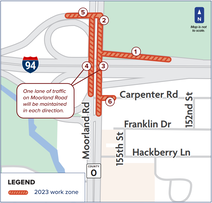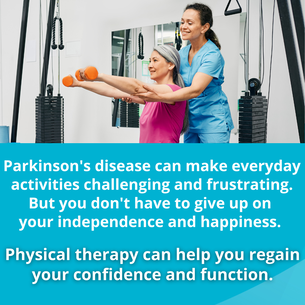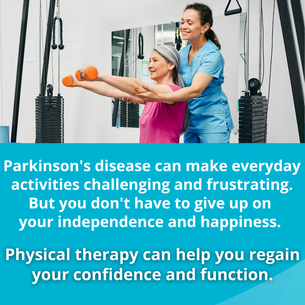|
Welcome to the July 2023 issue of In Focus with PT Plus Physical Therapy What's New at PT Plus  Welcome Colleen PT Plus is excited to welcome Colleen to our physical therapy team. Colleen is working out of our Elm Grove and Greenfield offices. To get to know Colleen a little better, visit our website to see her bio video!  Elm Grove Construction The Interstate 94 and Moorland Road interchange will be under construction until late fall. Here is a link to the WI DOT Project Overview detailing what the project is for and how traffic will be impacted. We apologize for the inconvenience, we just wanted to make you aware of the detours so you can allow for extra time getting to our Elm Grove clinic.  Has PT Plus helped you live your best life? Our mission is Touching Lives. We believe each life that walks through our clinic doors can be impacted in a positive way. If you think PT Plus has touched your life, please submit your story to share with the world! If selected, we may reach out for a video or photo testimonial. Recent Google Review Susan Good, ★★★★★ My experience with PT Plus has been life changing. The care and attention to every detail by my therapist. has been exceptional. After suffering for 30 years with vertigo, I am now virtually symptom free. I can't say enough about the quality of care, knowledge, and professionalism of this facility and the professionals who work there. I highly recommend PT Plus, for any of your physical therapy needs.  How Physical Therapy Helps People With Parkinson's Disease Parkinson's disease (PD) is a progressive neurological disorder that affects movement, balance, posture, and coordination. It can also cause non-motor symptoms such as pain, fatigue, mood changes and cognitive impairment. While there is no cure for PD, there are treatments that can help manage the symptoms and read More...
0 Comments
 Parkinson's disease (PD) is a progressive neurological disorder that affects movement, balance, posture, and coordination. It can also cause non-motor symptoms such as pain, fatigue, mood changes and cognitive impairment. While there is no cure for PD, there are treatments that can help manage the symptoms and improve the quality of life of people living with PD. Physical therapy is one of these treatments. PT can help restore or maintain physical function, mobility, and independence. Physical therapists are trained professionals who can assess, diagnose, and treat movement problems related to PD. They can also provide education, advice, and support to people with PD and their caregivers. Benefits of Physical Therapy for People with PDPhysical therapy can help people with PD in many ways, such as: Improving muscle strength and endurance. Both age and PD can weaken and decondition muscles. A physical therapist will prescribe exercises using light weights or resistance bands to improve strength. More strength helps with balance and mobility. Enhancing amplitude of movement PD can cause people to reduce the size and speed of movements. This can affect walking, speech, facial expressions, and gestures. Physical therapy can help increase the amplitude of movement by teaching overexaggerated physical movements, such as high steps and arm swings. This is a way to retrain the muscles and brain to compensate for the reduced movement that Parkinson's can cause. The LSVT BIG program is a specific set of exercises and activities that has been shown to improve mobility and quality of life. Reinforcing reciprocal patterns. Reciprocal movements are side-to-side and left-to-right patterns, such as swinging your arms while taking steps as you walk. PD can affect these patterns, which makes walking slow and unstable. Physical therapy can help to reinforce reciprocal patterns by using machines like a recumbent bicycle or elliptical machine. Practicing walking with arm swings is another activity that can help restore reciprocal movements. This can improve coordination, rhythm, and fluidity of movement for people with Parkinson's. Dance and tai chi are other activities that involve reciprocal patterns. Improving balance and posture. PD commonly impairs balance. Your brain uses a complex mix of what you see, your inner ear and sensations from your feet and joints to maintain balance. Physical therapy can help to improve balance using exercises that challenge stability, such as standing on one leg or walking on uneven surfaces. PT will also focus on specific components of the balance system by doing things like having a person close their eyes to focus on the sensations from the feet and joints. Physical therapy can also improve posture by correcting any muscle tightness or weakness that may cause stooping or learning sideways. Increasing flexibility and range of motion. PD also often causes muscle stiffness and rigidity. Physical therapy can help increase flexibility and range of motion with stretching exercises that target specific muscles. Common areas of issue are the hip flexors, hamstrings, and calves. Stretching regularly can also help to reduce pain and spasm. Providing education and self-management advice. Physical therapy can help people learn more about PD and how it affects their movement. A physical therapist can provide tips on how to maintain safety when exercising, how to cope with fatigue or pain, how to use assistive devices if needed, and how to prevent or manage complications such as falls or freezing. Sounds Great. Is There Proof?Yes. Research backs up all these claims. One meta-study (a study that combines the results of many other studies) that covered 1827 participants found that when compared to no intervention, PT significantly improved:
A larger meta study that included 191 studies with 7998 participants found that PT significantly improved motor symptoms, gait, and quality of life. Specifically:
References
|
Archives
March 2024
Categories |
|
Central phone: 262-796-2850
Central fax: 262-796-2851 Central email: patientcare@ptplus.com Website by RyTech, LLC
|
|

